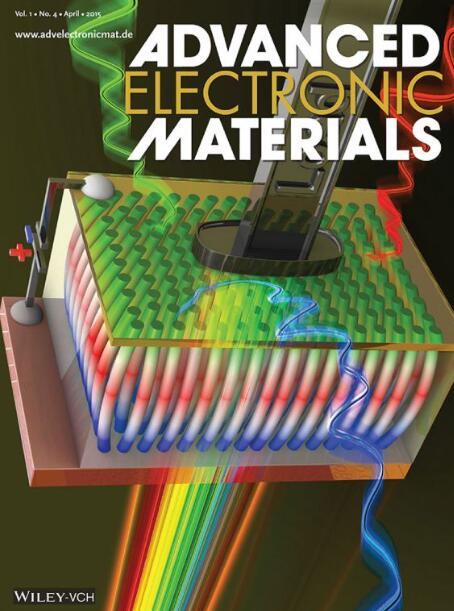Solution-Processed Sterically Hindered Donor–Acceptor Small Molecules as Molecular Floating-Gates for High-Efficiency Ambipolar Charge Trapping Memory
IF 5.3
2区 材料科学
Q2 MATERIALS SCIENCE, MULTIDISCIPLINARY
引用次数: 0
Abstract
The molecular floating-gate transistor memories are fabricated by a simple spinning-coating method using a small-molecule material spiro[fluorene-9,7′-dibenzo[c,h]acridine]-5′-one (SFDBAO) as the trapping element. The molecule with donor–acceptor (D–A) structures contains naphthylamine and quinone-like structures, which can serve as trapping sites for hole and electron integration. Combined with the steric hindrance effect of the molecule itself, the pentacene (PEN)-based transistor memory device with solution-processed SFDBAO shows excellent charge-trapping ability, including high hole trapping efficiency (3.43 × 1013 cm−2 V−1 s−1), fast programming speed (≈1 ms), and ambipolar memory behavior with a large memory window (74.3 V). The optimized device based on the SFDBAO@polystyrene (SFDBAO@PS = 5:1) film exhibits reliable endurance characteristic (>103 cycles) and good charge retention (>2 × 104 s). These results suggest that the high-performance ambipolar OFET memory can be achieved through a small-molecule material by rational molecular design.

溶液加工的立体受阻供体-受体小分子作为分子浮动门,用于高效安比极电荷捕获存储器
以小分子材料螺[芴-9,7 ' -二苯并[c,h]吖啶]-5 ' - 1 (SFDBAO)为捕获元件,采用简单的自旋镀膜方法制备了分子浮栅晶体管存储器。具有给受体(D-A)结构的分子含有萘胺和类醌结构,它们可以作为空穴和电子集成的捕获位点。结合分子本身的位阻效应,溶液处理SFDBAO的并五烯(PEN)基晶体管存储器件表现出优异的电荷捕获能力,包括高空穴捕获效率(3.43 × 1013 cm−2 V−1 s−1)、快速编程速度(≈1 ms)、基于SFDBAO@polystyrene (SFDBAO@PS = 5:1)薄膜的优化器件具有可靠的续航特性(>;103个循环)和良好的电荷保持特性(>2 × 104 s)。这些结果表明,通过合理的分子设计,可以通过小分子材料实现高性能的双极性OFET存储器。
本文章由计算机程序翻译,如有差异,请以英文原文为准。
求助全文
约1分钟内获得全文
求助全文
来源期刊

Advanced Electronic Materials
NANOSCIENCE & NANOTECHNOLOGYMATERIALS SCIE-MATERIALS SCIENCE, MULTIDISCIPLINARY
CiteScore
11.00
自引率
3.20%
发文量
433
期刊介绍:
Advanced Electronic Materials is an interdisciplinary forum for peer-reviewed, high-quality, high-impact research in the fields of materials science, physics, and engineering of electronic and magnetic materials. It includes research on physics and physical properties of electronic and magnetic materials, spintronics, electronics, device physics and engineering, micro- and nano-electromechanical systems, and organic electronics, in addition to fundamental research.
 求助内容:
求助内容: 应助结果提醒方式:
应助结果提醒方式:


